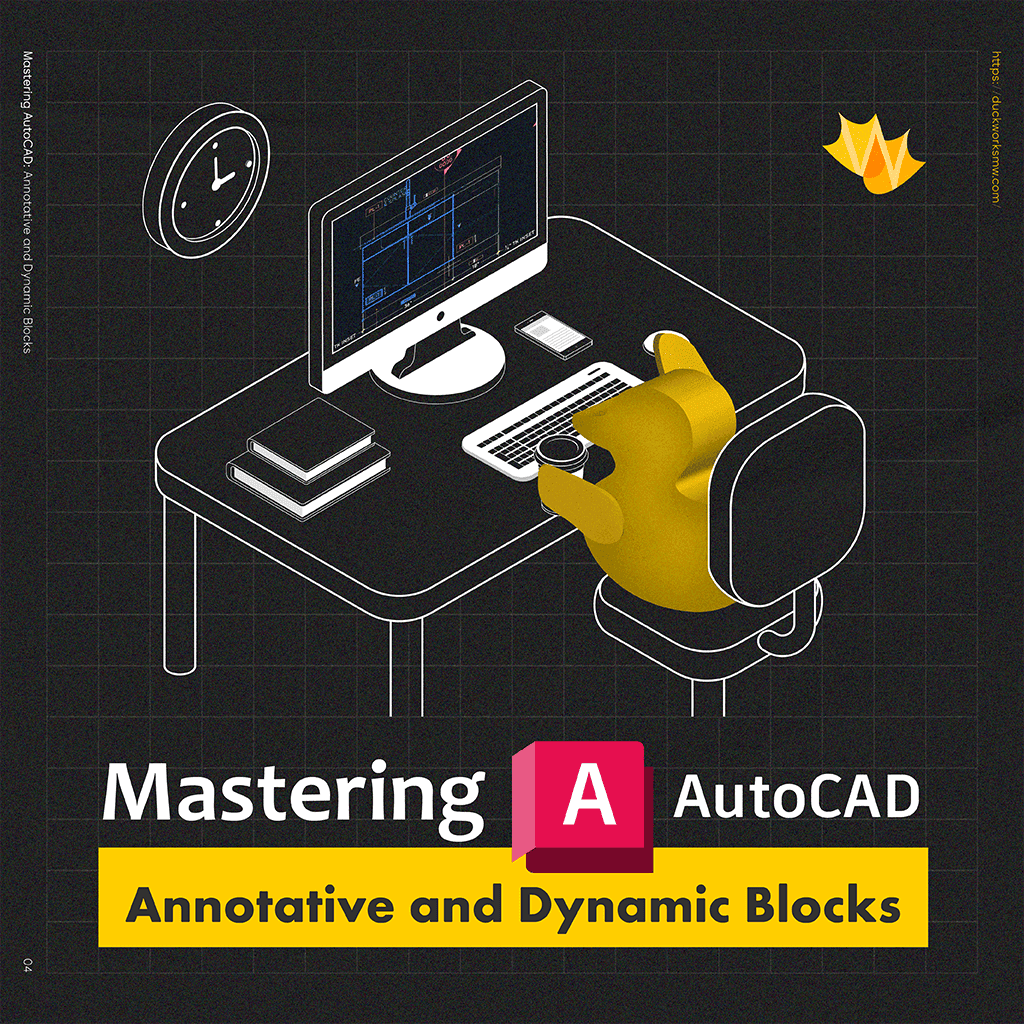
Welcome to another blog about enhancing your drafting process using key tools in AutoCAD. This blog will guide you through the essential features like annotative and dynamic blocks, among others, to streamline your work in AutoCAD.
Understanding Annotative Annotations
Before diving into specific features, it’s crucial to understand the difference between non-Annotative and Annotative annotations. This concept is key for efficient work in AutoCAD, especially when handling multiple viewports and scales.
Non-Annotative annotations such as dimensions or text are static, maintaining a fixed size regardless of your viewport scale. This can lead to issues where text becomes too large or small, making it unreadable at different scales.

Alternatively, Annotative annotations automatically adjust based on the viewport scale, ensuring that your text, dimensions, and symbols remain consistent and legible across various scales.
Implementing Annotative Dimensions
Understanding and using annotative annotations can significantly enhance your drawings. Annotative dimensions adapt based on your viewport scale, eliminating the worry of scaling discrepancies. To access and use these features, change or select your Annotative scale in the status bar and ensure your Annotative State is selected in the Dimensions group under the Annotate tab. Always confirm the presence of the annotative icon to ensure the setting is active.

Be wary of the “add scales automatically” feature, as it can add unnecessary scales cluttering your drawing. This option must be turned off if not needed.

Leveraging Annotative Blocks
Annotative blocks are ideal for symbols or detailed elements that require consistent sizing across different scales. Start by selecting your Annotative scale and status bar, and insert your block as usual. If unsure whether a block is Annotative, hover your mouse over it. The appearance of an Annotative icon will confirm it.

If a block is inserted with an incorrect scale, update its Annotative Properties to match the new scale using the “Add Scale” option. This feature allows scale adjustments without removing existing ones. Manage your scales effectively by adding or removing them as necessary using the “Add/Delete Scales” option.

Exploring Dynamic Blocks

Dynamic blocks are incredibly versatile, allowing you to create adaptable elements that can stretch, rotate, and transform as per your design needs. After inserting a dynamic block, identify it by selecting it and looking for any additional scripts. Utilize the visibility grip to toggle states or views, the rotation grip to set the desired angle, and the stretch grip to resize or reshape your block. Additionally, use the mirror grip to flip the block and double-click to fill in block attributes directly.

Redefining Blocks Efficiently

Updating blocks using the tool palette is a practical method to ensure the latest block versions are used in your drawings. Type “tool palettes” in the command line to open it, drag the new block version into the palette, and redefine blocks in your existing file by right-clicking and choosing Redefine from the palette. Sync attributes across all instances of the block using the “ATTSync” command to maintain consistency.

Multi Sheet File Plotting: Simplifying Your Workflow
Publishing multiple layout PDFs or print files simultaneously is a game-changer for efficient plotting. Select your layout tab, right-click, and choose Plot for single layout preparation.

For multiple layouts, select multiple tabs, right-click, and pick “Publish Selected Layouts.” The Publish dialog box provides flexibility in output settings and file management.

Conclusion
Mastering these AutoCAD tools—annotative dimensions, dynamic blocks, redefinition via tool palettes, and multi sheet plotting—empowers you to enhance your drafting efficiency and professional output.
Happy drafting!

Enrique Arauz
Training Coordinator